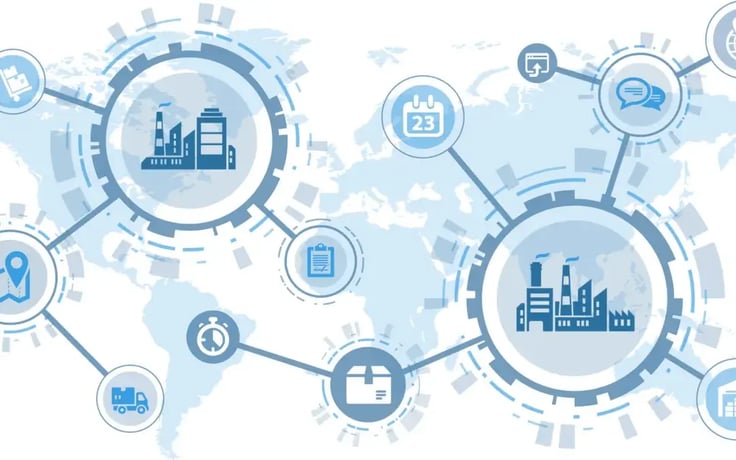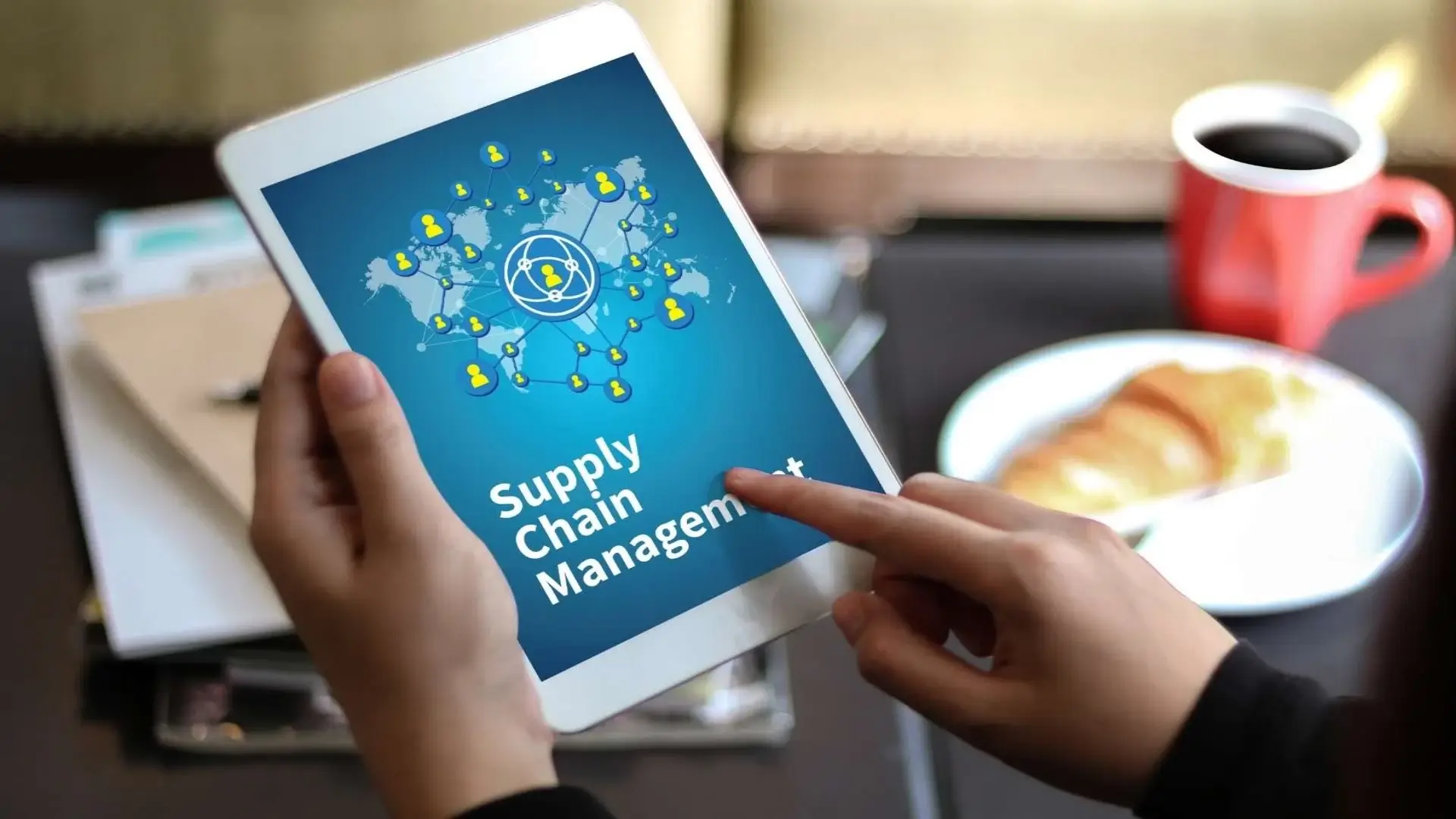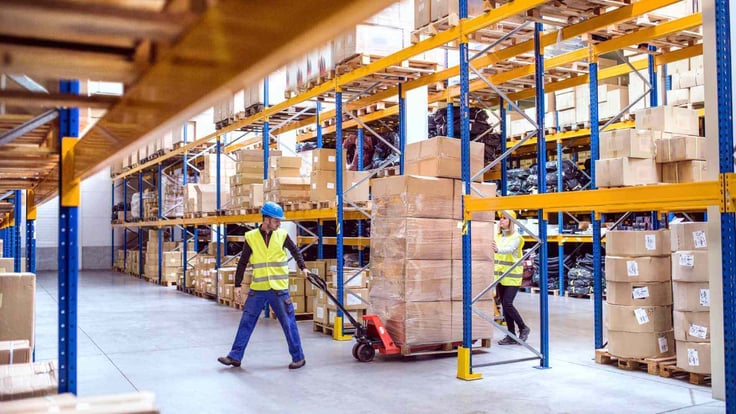Supply chain management (SCM) requires rigorous optimization. Products must move along the supply chain efficiently—from the component manufacturer, to the distribution center, to various retailers, and to the end-customer. In order to have optimal efficiency, it’s important to engage the right tools, software, and the best supply chain model. This will ensure you can provide maximum value to consumers and ultimately gain a competitive edge in the market.
The top four aspects of supply chain management are:
- choosing the right supply chain model for your business
- operating the best SCM system
- planning—forecasting, sourcing, and procurement
- working with the best partners you can find
Set up for Success: Supply Chain Models

To track all aspects of your supply chain, choosing the right supply chain model will depend on your business, your products, and the size of your company. There are many different models; some focus on speed, others on agility or flexibility, and some on operational efficiency.
Factored into your supply chain model should be five components: planning, sourcing, manufacturing and assembling, delivering, and returning. You may choose to outsource some aspects of these to a 3PL, 4PL, or 5PL depending on which core competency you need the most support with.
Create Solid Infrastructure: Supply Chain Management Systems
The first step to setting up your supply chain is getting your SCM systems right. Today’s ecommerce companies need state-of-the-art software to integrate all the necessary components of supply chain management together.
A great supply chain management system should connect and track all places your products go. Ideally the system is your window to communicate with suppliers and manufacturers—how you can send forecasts and updates required to ensure you have the exact amount of inventory you need. Your system should also connect with retailers, whether DTC, B2B, dropshipping relationships, or any online marketplaces you work with. Ideally you can also easily track your inventory through the warehouse (whether it’s managed by a 3PL or your own team), when it’s picked up by a transportation provider, or headed back to the distribution center because of a return.
Make a Plan: Forecasting to Meet Customer Demand
Planning is a major aspect of good supply chain management. There are important timing cues at each step of the supply chain journey that require preparation and planning.
Forecasting is the planning action you’ll need to take in order to meet customer demand. Creating accurate forecasts can be difficult, but it’s necessary to balance the supply and demand of your product in order to communicate your needs to your suppliers.
To create an accurate forecast (or as close to accurate as possible) you’ll want to combine the historical sales data with current consumer buying trends. Including real-time data is imperative to stay relevant in today’s market. The goal is to have enough products that you don’t sell out or cause backorders, but not too much that you’re left with excess inventory and steep warehouse storage fees. Working with an enterprise resource planning tool (ERP) will make forecasting and inventory management much easier than trying to juggle spreadsheets. By using a good ERP system you’ll have access to real-time updates and you can connect your forecasts to your warehouse in order to match incoming shipments with what’s already in stock.

What is the Difference Between Procurement and Sourcing?
All supply chains start with sourcing, which is simply gathering all the raw materials needed to make or assemble a product. Sourcing components means vetting suppliers and manufacturers to make sure you’ll have the right parts for your product. Working with the partners you choose you’ll need to define the quality and quantity metrics as well as standards to follow. Sourcing lays the
for this crucial first part of your supply chain management.
Procurement on the other hand is a broad term that means acquiring any products, goods, or services that will make your operations run smoothly. While sourcing is related to hiring suppliers to make components and goods, procurement focuses more on the supplies themselves—gaining the materials needed to move products along the supply chain. Procurement is emphasized when there’s a crisis like a component shortage, or issue with the manufacturer.
Get Connected: Forging Supply Chain Partnerships

Speaking of crisis, when things go wrong you’ll want to make sure you have reputable partners to help. So much of supply chain management means building a resilient network of support for your business. Forging solid relationships with your supply chain partners will elevate your business and help you grow, but ultimately those relationships will help resolve issues when things don’t go smoothly. Partners who know your business well, can advocate for your company when you may need it. When the manufacturer is backed up and having issues allocating parts, if you have a close working relationship, they are likely going to choose your business over a business they don’t have a close relationship with. It’s the same across the supply chain, from freight carriers, 3PLs, and more. Having true partners that you work with (not just vendors with a transactional relationship) will mean all the difference.
The ultimate person who can put this into place is your supply chain manager. This role is in charge of the supply chain management, from parts to the people and every step of the supply chain journey. Having a competent supply chain manager with deep expertise and experience will set you up to have a very efficient supply chain.
Automate, Automate, Automate: Working with a 3PL for Growth

Companies’ ecommerce fulfillment operations must have impeccable supply chain management in order to stay competitive in the market. Finding the right partners to help support the flow of products along the supply chain is the only way to excel in this area of ecommerce.
Outsourcing to a 3PL (third-party logistics) provider will take a huge portion of supply chain management off your plate. Many 3PLs manage only pick, pack, and ship, but a great 3PL will help with so much more—automation capabilities are a key differentiator. Modern 3PLs will automate many operations and business processes: the assembly line, warehouse operations, and order management systems, for example. Automation has many benefits. The biggest is time saving—manual tasks inherently take longer to execute than automated ones. Other benefits of automation include: lower percentage of human error, decreased cost, increased speed and accuracy.
If you are in search of a 3PL to help you with supply chain management, DCL Logistics is a modern 3PL with 40 years of operational expertise. Our full suite of fulfillment services allows brands to scale without sacrificing flexibility, quality, or customer satisfaction.
-
You’ll read about:
Be the first to know
Subscribe to our newsletter






